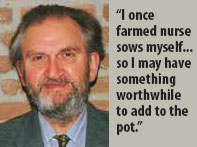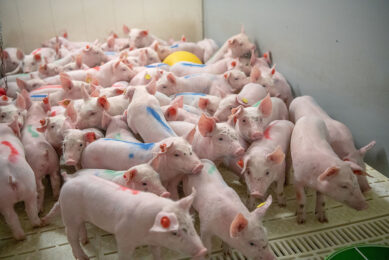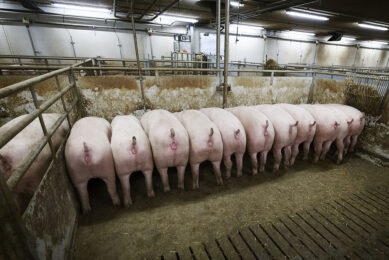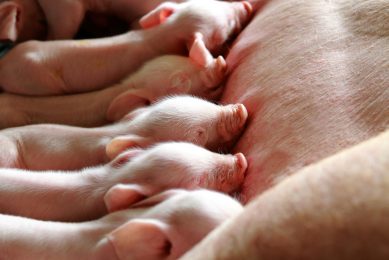What the textbooks don’t tell you about… Defusing the hyperprolificacy timebomb (part 3)

My last two articles covered what we need to do to ‘set up’ the gilt and then the young sow to produce the huge litters which modern genetics – and your undoubted skill – has made it happen. Good for all of us – we have the groundwork laid out to achieve these massive litters. Now we must defend her from the depredations of all this hyperprolificacy and not become the victims of our own success by ending up with what I’ve called ‘the Shattered Sow Syndrome’ with it’s enforced premature culling and an expensively short herd life (SPL – Sow Productive Life).
By John Gadd
So far the textbooks cover the first two subjects hardly at all, which is why I spent two articles describing them. But they have covered the subject of how to take the load off the sow and gilt pretty well. Anyway, producers and their stockpersons have long been doing what is required in a variety of ways for years (see Box), except possibly using a nurse sow which is still not all that common.So I’m not going to bore you with advice which you already know, but spend a little time on the nurse sow strategy, which I’m sure we shall see more of in future and which to date the textbooks hardly mention. Years ago I once farmed nurse sows myself as a student trainee to cope with production bulges, so I may have something worthwhile to add to the pot.
Fostering is not easy
It demands skill, good observation, patience, planning and time to do it well. How much time? I calculate that the best people I know increased their labour load per sow by 80 man/hours per sow per year and some ‘14 per litter’ clients by considerably more than that. But it pays back in a much longer herd life – spreading today’s escalating overheads against capital restocking needs.
There are at least eight other down-points to fostering, but there are plenty of pig technicians who are dealing with them when they occur, so don’t be disheartened. Just appreciate what they could be and take the counter-measures which have proved effective.
Nurse sows
“Not feasible,” say the detractors. “I don’t want any of my best sows to be out of production for three to five weeks when they should be hard at it making babies!” I understand that argument, but look at it like this. If a nurse sow candidate is kept and bred normally she produces, if you are lucky, 11 weaners per litter or half a weaner a week over a full year. Good for her.But divert her into temporary nursing duty for three weeks or so, then as a nurse sow rearing at least ten surplus or underprivileged piglets, not only does she get these weaker weaners up to speed, but in doing so she has reared three piglets a week during her term of duty, not half a pig per week as a normal sow. And she can have defused part of the hyperprolificacy timebomb as well, especially for massive gilt litters.
“But,” say the doubters, “she has plundered herself after suckling the equivalent of two litters on the trot, maybe three if you give her a further family!” This never happened with me as, under the eye of our experienced stockman, we chose a docile, prolific milker with a good appetite and with a track record of high litter numbers born. We allowed at least ten hours colostral suckling of their natural dam before I put the transfers on to a newly-weaned nurse sow.
Beaten-up!
We chose the better piglets to be moved across, allowing the smaller ‘thinnies’ to remain on their dam and – after nature smacked me firmly on the wrist when I transferred a few heavies along with some thinnies who got properly beaten up and upset the sow to boot – I never did that again! The transfers must be of similar weight and ‘do-ability’.
There are at least eight more do’s and don’t do’s to facilitate acceptance by the sow and quick settling-in by the piglets, but I have run out of space. I will cover what these are in one of my future blogs for Pig Progress. Suffice it to say that using a nurse sow can be an enthralling – and I use that word deliberately – way of enjoying the stockperson’s job.
Measures to manage baby pigs/ too many pigs/ obvious poor-doers:
|











